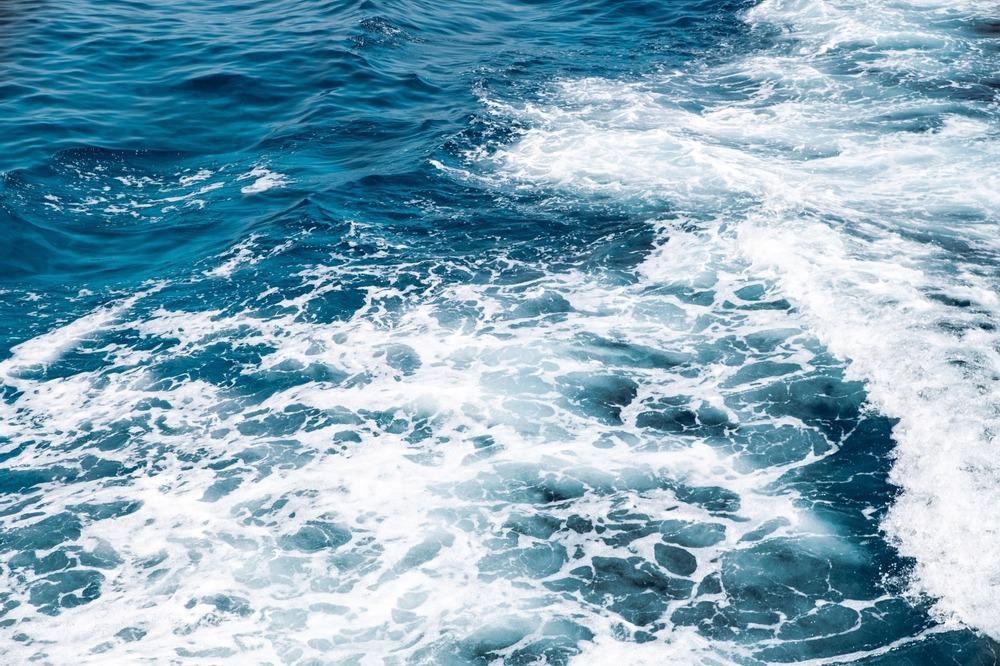Researchers from the Pacific Northwest National Laboratory in the United States have reported the development of a novel electrochemical hydrogen-looping system for the removal of CO2 from seawater. Their findings have been published online in the journal ACS Energy Letters.

Study: An Electrochemical Hydrogen-Looping System for Low-Cost CO2 Capture from Seawater. Image Credit: David Prado Perucha/Shutterstock.com
Addressing Climate Change with Carbon Capture
Society needs to rapidly decarbonize if net-zero climate emissions targets are to be achieved by 2050 to address the worst effects of anthropogenic climate change. Renewable energy generation technologies have started to replace conventional fossil fuel power stations over the past few decades, reducing the amount of new carbon emissions being generated. These technologies do not address legacy carbon pollution, however.
In recent years, there has been increasing attention on carbon capture and storage technologies to remove carbon from the environment. Carbon capture and storage technologies attached to conventional fossil fuel power plants and cement plants have provided promising results. Systems which remove legacy carbon emissions from the atmosphere and store it in locations such as underground storage are likely to play an increasing role in the future.
Another option is to recover carbon dioxide from seawater. The oceans contain vastly elevated concentrations of CO2 compared to the atmosphere (around 140 times higher), and the world’s oceans possess the majority of natural carbon sequestration capacity. An industrial-scale carbon capture solution to remove this climate change-inducing substance from the oceans has the potential to remove and sequester billions of tons of carbon dioxide per year.
Sequestering Carbon from Seawater
Developing carbon capture and storage technologies to remove and sequester carbon dioxide from seawater faces several challenges. Cost, both capital and operational, for seawater carbon capture and storage is high. Alongside this, there are ecological considerations, and the design of systems requires them to withstand damage from seawater corrosion.
Renewable energy generation, another key technological strategy for mitigating anthropogenic climate change, has been steadily driving down electricity generation costs due to industrial-scale installation and use and rapid advances in technology and materials. This has led to an increased interest in electrochemical methods for carbon capture and storage systems.
Two main electrochemical approaches that have been explored in recent research are electrolytic cation exchange modules and bipolar membrane electrodialysis. Both methods involve splitting dissolved salt into acids and bases. Acids react with bicarbonate and carbonate in seawater, and through a reaction with dissolved inorganic carbon they produce CO2, which is then recovered and sequestered. A weak base solution is then discharged back into the environment.
Whilst these technologies are promising, their high operational costs caused by the required high cell voltages limit their industrial-scale deployment. Furthermore, both systems require the use of precious metal oxide catalysts due to oxygen evolution reactions. These catalysts are resource-limited and expensive. They cannot adequately compete with electrolysis for hydrogen generation. Some studies have reported improved bipolar membrane electrodialysis systems, but these systems are still complex and expensive to run.
The Study
The research has taken a novel approach to directly extract carbon dioxide from seawater with electrochemical methods. The technology is based on a traditional electrodialysis cell which provides OH- and protons by splitting water with the assistance of hydrogen and oxidation and evolution reactions at two electrodes. The authors have referred to the proposed system as an EHL flow cell, which stands for electrochemical hydrogen-looping.
In the system, hydrogen is generated at the positive electrode and is then circulated back to the negative electrode. This makes it a source of protons. The theoretical cell voltage of the proposed system is lower than conventional electrochemical methods, at 0.48 V, which addresses the issues with these techniques. The EHL flow cell consumes 56% lower energy than conventional bipolar membrane electrodialysis methods.
Two protons are released per hydrogen molecule by hydrogen oxidation at the flow cell’s anode. These are then transported through a proton exchange membrane, reacting with HCO3- and CO32- ions, producing acidified seawater and carbon dioxide which is then collected. Hydrogen produced at the cathode then flows back to the anode, creating a closed-loop system that compensates for hydrogen consumption during the oxidation reaction. A weak base solution is then discharged.
The authors analyzed the EHL flow cell’s performance under various conditions. Compared with other technologies, the novel system proposed in the research has mild operating conditions, enabling the use of inexpensive components.
The research has demonstrated the development of a next-generation flow cell for carbon capture from seawater. More abundant and low-cost catalysts can be used due to the hydrogen evolution reaction in the system. Moreover, the flow cell has scaling potential and can be deployed in centralized or modular deployments. Its self-sustaining capabilities provide cost benefits for widespread use.
More from AZoM: Identifying Sulfur Poisoning with Near-Field Infrared Spectroscopy
Further Reading
Yan, L et al. (2022) An Electrochemical Hydrogen-Looping System for Low-Cost CO2 Capture from Seawater ACS Energy Lett. 7 pp. 1947-1952 [online] pubs.acs.org. Available at: https://pubs.acs.org/doi/10.1021/acsenergylett.2c00396
Disclaimer: The views expressed here are those of the author expressed in their private capacity and do not necessarily represent the views of AZoM.com Limited T/A AZoNetwork the owner and operator of this website. This disclaimer forms part of the Terms and conditions of use of this website.